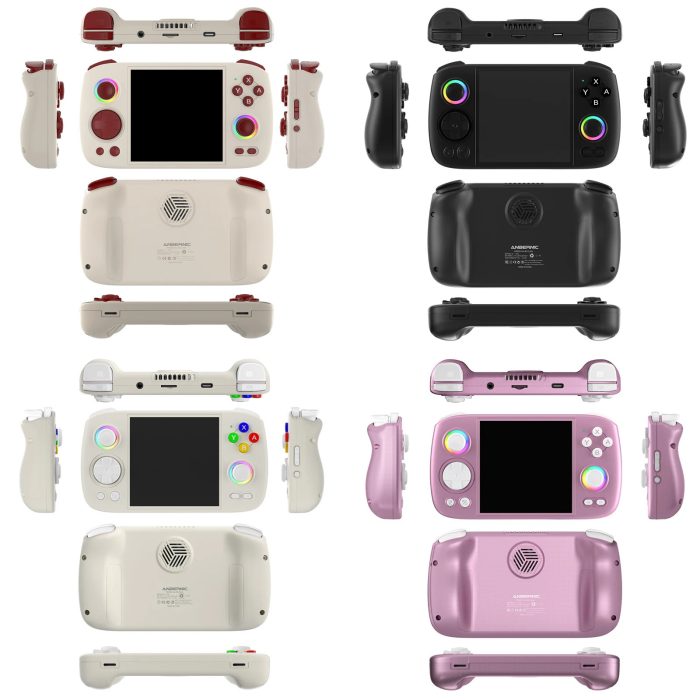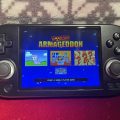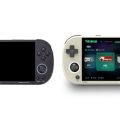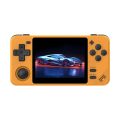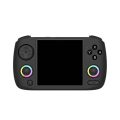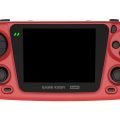As someone who loves retro gaming, I’ve spent countless hours testing and playing with handheld consoles that offer PS2 emulation. Recently, I had the chance to play with the Anbernic RG Cube, and I have to say, it surprised me. The RG Cube, specifically with its PlayStation 2 emulation capabilities, caught me off guard with its performance, given that the hardware is identical to its predecessor, the RG556. Yet, somehow, it managed to outperform it. Let’s break it down.
First Impressions and Hardware Specs
So, the RG Cube comes equipped with 8 GB of RAM and the same Unisoc T820 processor found in the RG556. Honestly, I wasn’t expecting anything groundbreaking in terms of performance since, on paper, the specs are identical to the RG 556. But when I booted up the console and ran some PS2 games, I was pleasantly surprised by how smoothly it ran. Games that typically struggled on the RG 556, like Most Wanted and God of War, were much more playable on the RG Cube.
What’s even more curious is that the RG Cube sports a lower resolution, 720p versus the 1080p screen of the RG 556. Maybe that’s why it runs more smoothly, with fewer performance drops. But it could also be due to better firmware optimization, which is something the RG 556 has been lacking. In fact, in the months I’ve owned the 556, it’s had zero firmware updates. The Cube, on the other hand, already had one update in the short time I’ve been testing it, and I feel that speaks volumes about where Anbernic’s priorities are with this new model.
Unique Screen Aspect Ratio
One of the most unusual features of the RG Cube is its screen aspect ratio. The display is 1:1, which is a literal square screen. Most games were originally designed for 4:3 or 16:9, so you’ll often see black bars at the top and bottom unless you use the emulator’s stretching feature. I have to admit, at first, the stretched image was a bit jarring. But after a while, I didn’t notice it as much, and it stopped bothering me.
It’s interesting how quickly your brain can adapt. Sure, the initial reaction might be, “Wow, that looks weird,” but after some time playing, it becomes the new normal. I’ve gotten used to it, and I actually started to appreciate the quirky screen after a while. I tested games like God of War with the screen stretched to fill the whole display, and while it looked odd initially, it felt fine after a few minutes of play. I’d love to hear what others think about this, though, so feel free to share your opinions.
Game Testing: God of War and Shadow of the Colossus
As for the games themselves, I started off with God of War, which I tested at a resolution setting of 1.5x. At this resolution, the game ran impressively well—smooth frame rates and solid graphics without any noticeable slowdowns. I did try bumping it up to 2x, but there was a slight drop in performance. Honestly, though, I prefer keeping it at 1.5x because the gameplay was fluid, and visually, it still looked great.
Next up, I tried Shadow of the Colossus. This one was a bit more demanding, as you might expect. The game had some slight frame drops here and there, particularly in open-world areas, but nothing that made the game unplayable. The performance still stayed pretty solid, and considering how demanding Shadow of the Colossus is on an emulator, I was impressed with how well the Cube handled it.
Testing Other Games: Tomb Raider Underworld, Max Payne 2, and Need for Speed: Most Wanted
Moving on to some other favorites, I tested Tomb Raider Underworld. This game ran very smoothly, though there were a few moments in particularly graphic-heavy scenes where frame drops were noticeable, especially when there were a lot of visual effects like fire. Still, the RG Cube handled it better than I expected.
Then there’s Max Payne 2. At a resolution of 2x, it performed remarkably well. The framerate hovered at a pretty steady 60 FPS, and even though it sometimes dipped to around 57 or 58 FPS, the gameplay remained smooth. I have to say, for a handheld console, this is pretty impressive performance for a PS2 game. The famous bullet-time effects were smooth and didn’t stutter at all.
Finally, I tested Need for Speed: Most Wanted, which is notorious for being tough to emulate. I ran it at a resolution of 1.5x, and although the console’s fan kicked into overdrive, the game still ran surprisingly well. The Cube struggled a bit with heavier scenes, and there were a few dips in performance, but overall, it was still enjoyable.
Final Thoughts on Performance and Value
I could easily nitpick and say, “Hey, I wish this console could run all PS2 games at 3x resolution and 60 FPS,” but that’s not realistic for the price point of the RG Cube. The reality is, for a console that’s designed for emulation and priced affordably, it does an excellent job.
Is it perfect? No. But for the price, the build quality, and the performance improvements over the RG 556, it’s hard to be too critical. In fact, this might just be one of the best Android-based retro emulation consoles for its size and power. Sure, the square screen is unconventional, but the Cube handles it surprisingly well. And while some may find the 1:1 aspect ratio a bit off-putting, I think it adds to the console’s charm.
If you’re into retro gaming and looking for a compact, portable option for PS2 emulation, the Anbernic RG Cube is definitely worth considering. It might not handle everything perfectly, but for a small form factor Android console, it offers an impressive amount of power and value.
